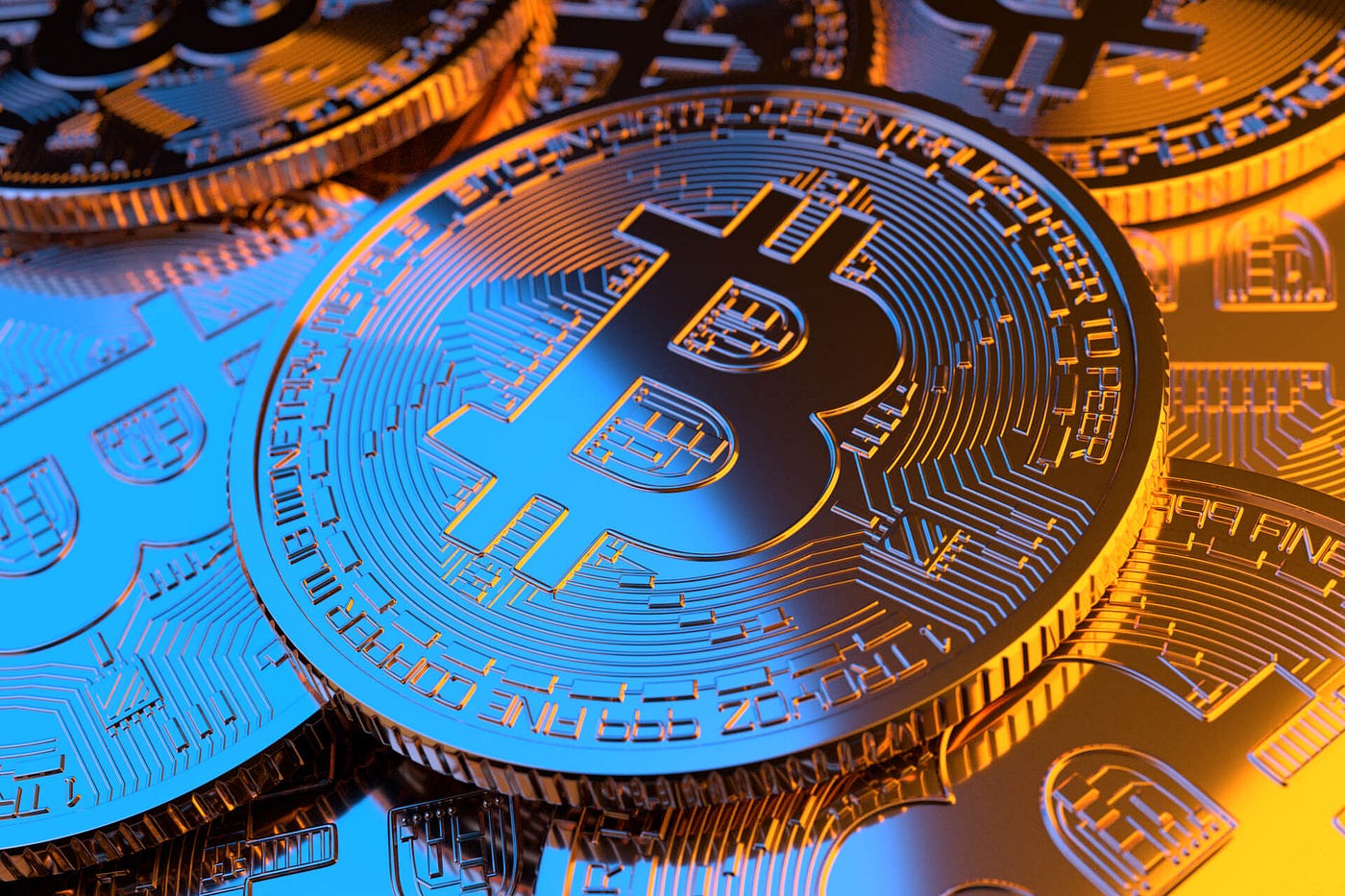Introduction to Bitcoin
What is Bitcoin?
The world’s first and most well-known cryptocurrency is called Bitcoin. Bitcoin is decentralized, which means that no one entity controls it, in contrast to conventional currency that is issued by governments and managed by banks. It is fully online and runs on a peer-to-peer network that allows users to send and receive money without the need for middlemen.

Blockchain technology, a safe and open digital ledger that logs every transaction ever conducted, is what makes Bitcoin unique. Because transactions can be verified by anybody yet cannot be altered once they are recorded, this guarantees the system’s reliability.
Bitcoin is frequently referred to as “digital gold” due to its similarities to precious metals, including durability, limited quantity, and universal worth. Since there will only ever be 21 million Bitcoins, their scarcity contributes to their long-term value proposition.
Bitcoin may initially appear complicated to novices, but at its foundation, it’s just a digital currency that enables international transactions without the need for banks. By 2025, it is more than simply a currency; it is a store of value, an investment asset, and a financial movement that is upending the established economic order.
The Birth of Bitcoin: A Brief History
The history of Bitcoin started in 2008, during the global financial crisis, when a whitepaper titled Bitcoin: A Peer-to-Peer Electronic Cash System was published by an unidentified person or group going by the name Satoshi Nakamoto.With no central banks creating money indefinitely, no expensive middlemen, and no borders for money transfers, the goal was to establish a currency free from the shortcomings of traditional finance.
When Nakamoto mined the genesis block in January 2009, the first Bitcoin transaction took place.This block hinted at Bitcoin’s goal as a substitute for government-controlled currency by mentioning the troubled banking system of the era in a concealed message.
Bitcoin evolved over time from a specialized tech experiment to a major player in the global financial system. In a well-known 2010 transaction, 10,000 Bitcoin was used to purchase two pizzas, which would have cost roughly $40 at the time but would now have cost billions. By 2025, banks, hedge funds, and even governments view Bitcoin as a serious investment in addition to being accepted by large corporations.
How Bitcoin Works
Blockchain Technology Explained
Blockchain technology, a decentralized public ledger where each transaction is forever recorded, is the foundation of Bitcoin. Consider a notebook where each page represents a “block” of transactions that are shared by thousands of computers around the world. A chain of blocks—hence the term blockchain—is created when a page is filled and added to the notebook in chronological order.
Because it would be nearly hard to change every copy of the ledger on every computer at once in order to change any previous transaction, this system is secure. Another important advantage is transparency, which allows anybody to view the complete history of Bitcoin transactions without jeopardizing privacy because only wallet addresses—not individual names—are displayed.
A central authority is also superseded by blockchain. Rather, network users use cryptographic proof to validate transactions. Bitcoin can function worldwide without the possibility of a single point of failure because to this trustless structure.
Bitcoin Mining and How New Coins are Created
The process of producing new Bitcoins and confirming transactions is known as mining. Miners solve challenging mathematical puzzles with the aid of sophisticated computers. The reward for solving one is now 3.125 BTC (after the 2024 halving), and the miner adds a new block of transactions to the blockchain.
Mining has two purposes: it issues new currency and defends the network against fraud. It is resource-intensive, though, requiring a lot of electricity and processing power. In return, mining helps maintain Bitcoin’s scarcity, as new coins are produced at a regular rate until the maximum quantity of 21 million is achieved.
In order to address environmental issues, mining has become more professionalized in 2025, with major operations utilizing renewable energy sources and specialist machinery. Although private home mining is still feasible, it is far less lucrative unless electricity prices are very low.
Why Bitcoin is Trending in 2025
The Surge in Institutional Investments
The rise in institutional investors, including banks, pension funds, and publicly traded firms, contributing Bitcoin to their portfolios is one of the primary causes of the cryptocurrency’s 2025 headlines. These significant investments provide Bitcoin’s market credibility and stability, which lessens the perception of the cryptocurrency as a dangerous, speculative asset.
Bitcoin’s decentralization, scarcity, and long-term growth potential draw in institutions. Many people view Bitcoin as a hedge that is comparable to gold but more portable and divisible in light of the growing global fears about inflation. It is now simpler for regular investors to obtain exposure without having to handle digital wallets directly thanks to the introduction of regulated Bitcoin ETFs (Exchange-Traded Funds) in a number of nations.
Why Bitcoin is Trending in 2025
Bitcoin as a Hedge Against Inflation
Many economies have seen a spike in global inflation in 2025, which has reduced the value of old currencies. When people see that their funds are losing purchasing power, Bitcoin comes into play. Bitcoin has a hard cap of 21 million coins, unlike conventional money, which central banks can produce indefinitely. It is desirable as a hedge against inflation because of its scarcity, which prevents overproduction from devaluing it.
Bitcoin functions similarly to “digital gold” in that it is divisible, portable, and doesn’t need to be kept in a physical vault. In order to protect their wealth over time, investors who worry that their local currency will depreciate frequently convert a portion of their holdings into Bitcoin. Bitcoin offers a comparatively steady store of value in comparison to their fluctuating currencies, which has led to large adoption spikes in several high-inflation nations like Argentina and Turkey.
Even big businesses are paying attention. To guard against fiat depreciation, businesses such as Tesla, MicroStrategy, and international hedge funds include Bitcoin in their treasury reserves. As a result, demand has increased and Bitcoin has become more widely discussed in the financial community.
Popularity Among Younger Generations
Since Gen Z and Millennials grew up in a technologically advanced society, the concept of a currency that is entirely digital doesn’t sound odd at all. In actuality, Bitcoin symbolizes financial independence and freedom from conventional banks for a large number of younger investors.
Additionally, younger generations are more likely to try out new financial tools and are more at ease with risk. They view Bitcoin as a component of a larger digital economy that encompasses decentralized finance (DeFi), NFTs, and the metaverse, in addition to being an investment.
Social media sites like YouTube, TikTok, and Twitter (X) are ablaze with Bitcoin-related material, including price forecasts, financial advice, and even instructional programs. Tech titans and influencers like Elon Musk and Jack Dorsey frequently talk about Bitcoin, which keeps it in the news.
Additionally, the gamification of investing through apps like Coinbase, Binance, and Robinhood has lowered the barrier to entry by making it simpler for younger individuals to purchase fractional quantities of Bitcoin. In contrast to stocks or real estate, which frequently need substantial capital, Bitcoin enables anybody to begin with as little as a few dollars.
Buying and Storing Bitcoin
Choosing the Right Exchange
In 2025, purchasing Bitcoin is considerably simpler than it was in the beginning, when a transaction required extensive technical understanding. These days, many of cryptocurrency exchanges offer easy-to-use websites and apps for trading, purchasing, and selling Bitcoin.
The following are the most crucial elements to take into account while selecting an exchange:
• Security attributes: (Whitelists for withdrawals, insurance plans, and two-factor authentication)
• Regulation: (if the transaction conforms with the laws of your nation)
• Charges: (withdrawal fees, trading fees, and hidden charges)
• Reputation: (hacking history, level of customer service)
Binance, Coinbase, Kraken, and Bitstamp are a few of the most well-known and reliable exchanges in 2025. Peer-to-peer Bitcoin purchases without middlemen are available on decentralized exchanges (DEXs) as Uniswap and PancakeSwap for users who want more security.
The dangers and difficulties of the volatility of the price of bitcoin
The volatility of Bitcoin is one of its most distinctive qualities and major drawbacks. Within a single day, prices can fluctuate by 10% to 20%. This offers chances for significant profits for experienced traders, but it can be frightening for novice investors.
There are multiple reasons for the volatility:
Speculative trading: A lot of investors purchase Bitcoin in the hopes of making rapid gains.
Low liquidity: in contrast to conventional marketplaces.
News, laws, and significant events all have an impact on market mood.
Even if long-term holders (HODLers) contend that volatility is a necessary cost of innovation and scarcity, it nevertheless prevents the currency from becoming widely accepted as a stable one. If Bitcoin’s value can decline dramatically over night, businesses might be reluctant to accept it.
Future Predictions for Bitcoin
Expert Opinions
Regarding the future of Bitcoin, financial experts are split. Some predict that as adoption increases and supply stays constrained, its value will keep rising. Others caution that its progress could be halted by technical advancements or regulatory crackdowns.
According to bullish analysts, Bitcoin will, like gold, play a central role in diverse financial portfolios by 2025. They cite the emergence of financial instruments based on Bitcoin and the growing number of institutions holding it as proof of its durability.
However, if public interest wanes, some believe it could burst like a bubble. They draw attention to how dependent Bitcoin is on market emotion and how it might eventually be supplanted by more advanced technologies.


